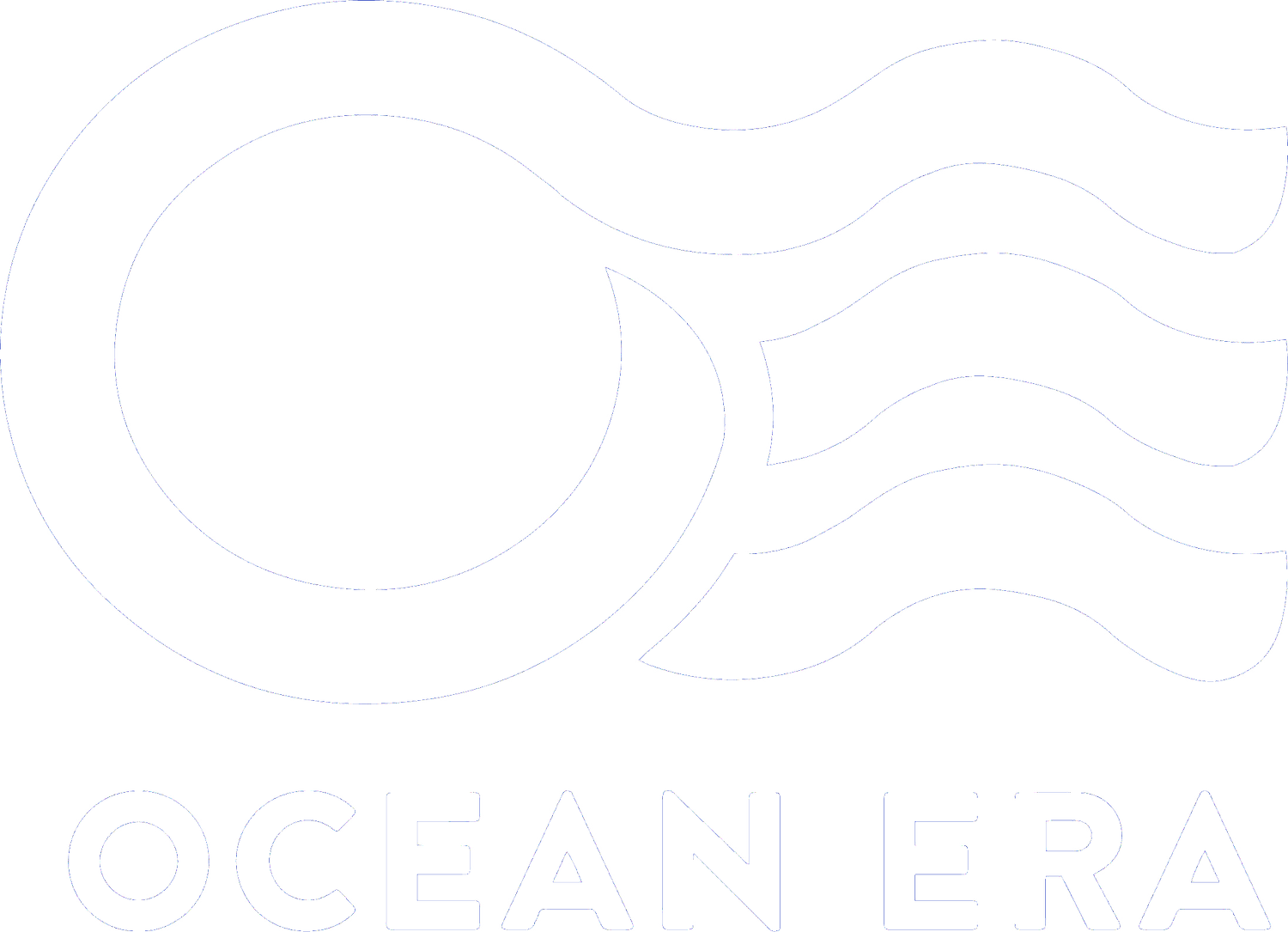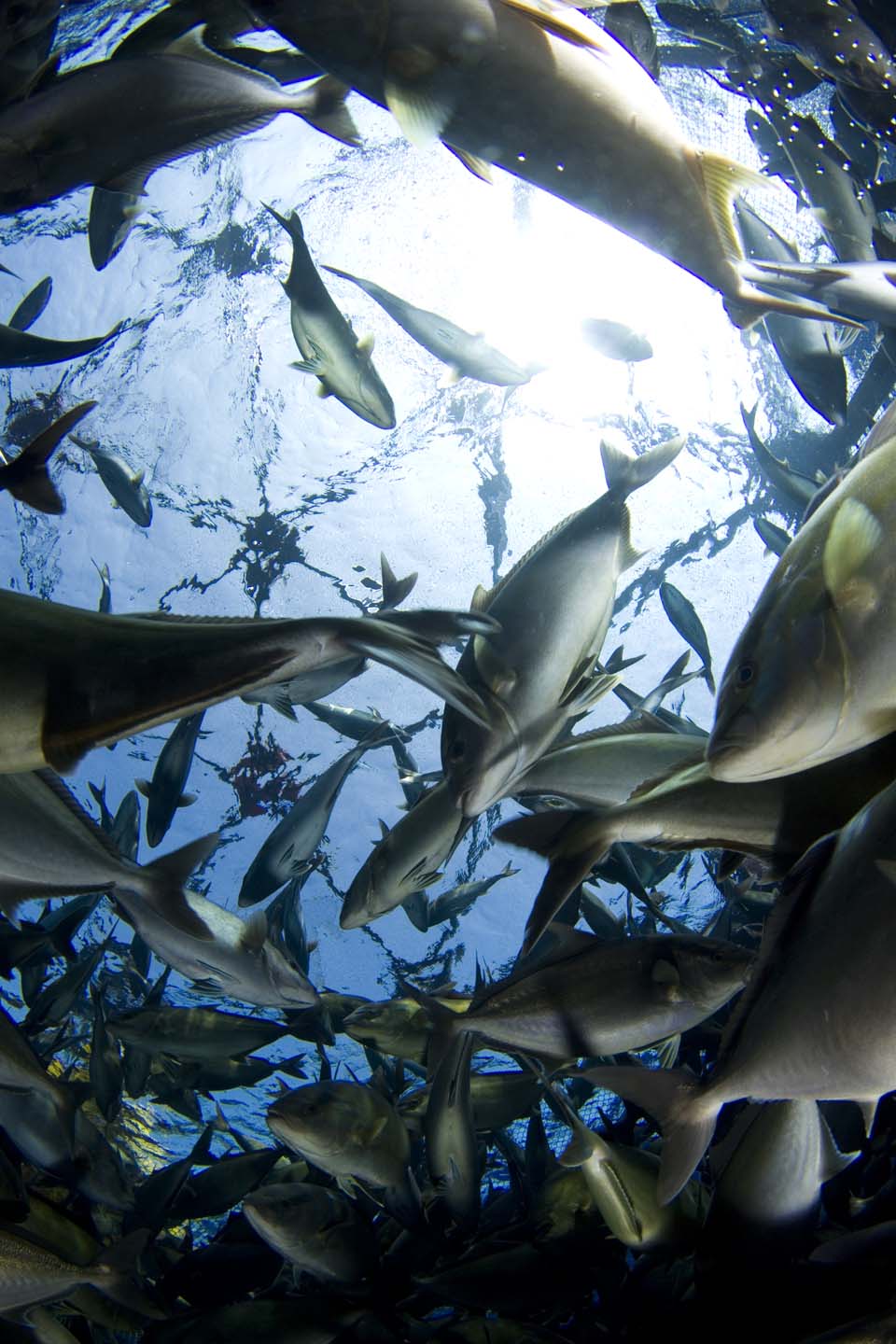Seaweed to the Rescue: Foods, Feeds, and Fuel
Macroalgae, or seaweeds, have been around for a very, very long time; fossil evidence of a red macroalga has been dated between 1 and 1.6 billion years ago (1). Seaweeds must be doing well for themselves, if they’ve survived this long! It’s this realization that has catalyzed phycological research ranging from nutrition, skin care, pharmaceuticals, and more recently, in aquaculture, alternative fuel sources, and carbon sequestration strategies (2-6). Seaweed is even being experimented with as an alternative to plastic packaging (7). Macroalgae have been overlooked by most of the world for far too long, but all of this is now changing, and rapidly. Although seaweed is not a new research topic, significant efforts and investments are being made to further explore its potential.
Before all of this, though, seaweed has been a consistent source of food. The farming of macroalgae is thought to have originated in Japan between the 17th and 19th centuries (8); harnessing the value of seaweed mariculture with no need for using arable land, freshwater, or artificial nutrients, all while introducing a way to help absorb excess nutrients or carbon from the ocean.
Seaweed farming at Nusa Lembongan, Bali. © Jean-Marie Hullot
Macroalgae mariculture is a huge commercial operation in Southeast Asian countries like Japan, China, Korea, and the Philippines. The west is slowly catching on. In Hawaiʻi, seaweed has been utilized for hundreds of years. We have over 500 species of seaweeds here in the islands, and our edible macroalgae, or limu, are savored in local cuisine. As the most remote archipelago in the world, there is a lot of ocean to go around—and this ocean is deep. On the west side of the Big Island (Hawaiʻi Island), the water depth plummets to 6,000 ft. (1,829 m), a mere three miles (4.8 km) offshore. West Hawaiʻi’s Natural Energy Lab of Hawaiʻi Authority (NELHA) supplies a consistent source of seawater pumped from two locations: surface seawater (SSW) from 69 ft. (21 m) and deep sea water (DSW) from 2,211 ft. (674 m). With a broad selection of native algal species, access to NELHA’s DSW and SSW on tap, Hawaiʻi is an ideal location to research mariculture opportunities. Our Blue Fields Project is designed to do just that. Funded by the Department of Energy’s MARINER Program (Macroalgae Research Inspiring Novel Energy Resources), the Blue Fields project proposes to test a single-point mooring array for high-yield macroalgae culture (9).
The two major challenges for offshore macroalgae culture in Hawaiʻi are species selection and offshore nutrient delivery. Very little research has been done into the culture of Hawaiʻi’s native species, and as a result there is limited knowledge of their growth requirements. There are demonstrable (and demonstrated) risks with introducing non-native algal species, which may compete with native ones (10). We will therefore only be using native species in our growth trials. Tropical surface waters are also nutrient poor, which explains their clear blue color. However, Hawaiʻi’s bathymetry (the steep offshore slope of the islands) means that nutrient rich DSW is readily available, and we plan on testing this as a means to stimulate macroalgae growth.
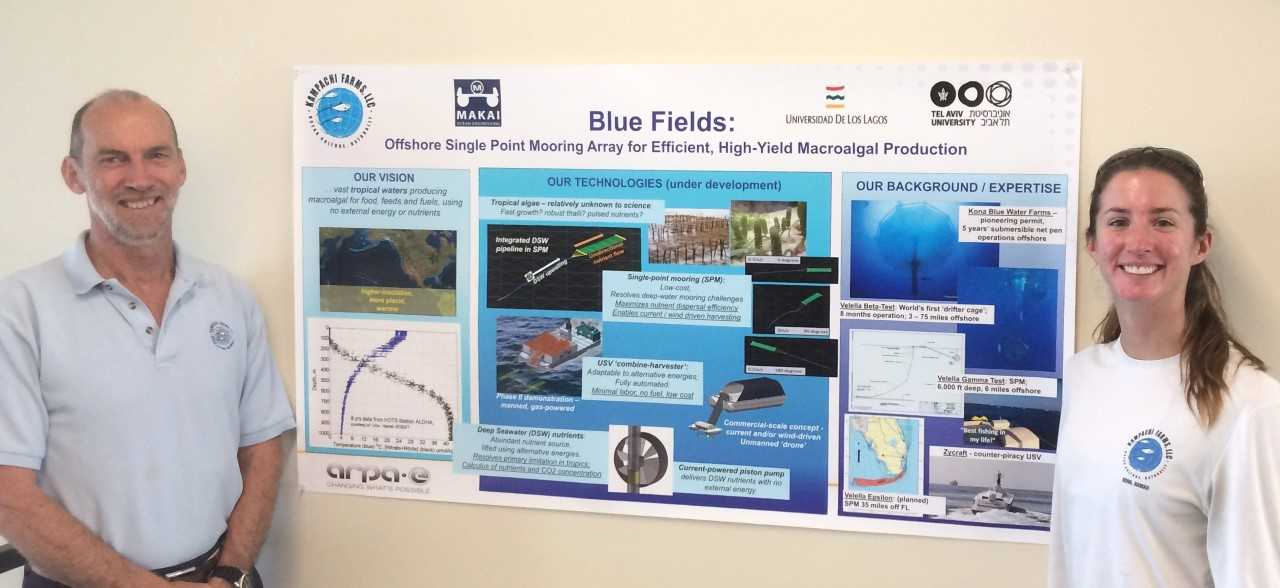
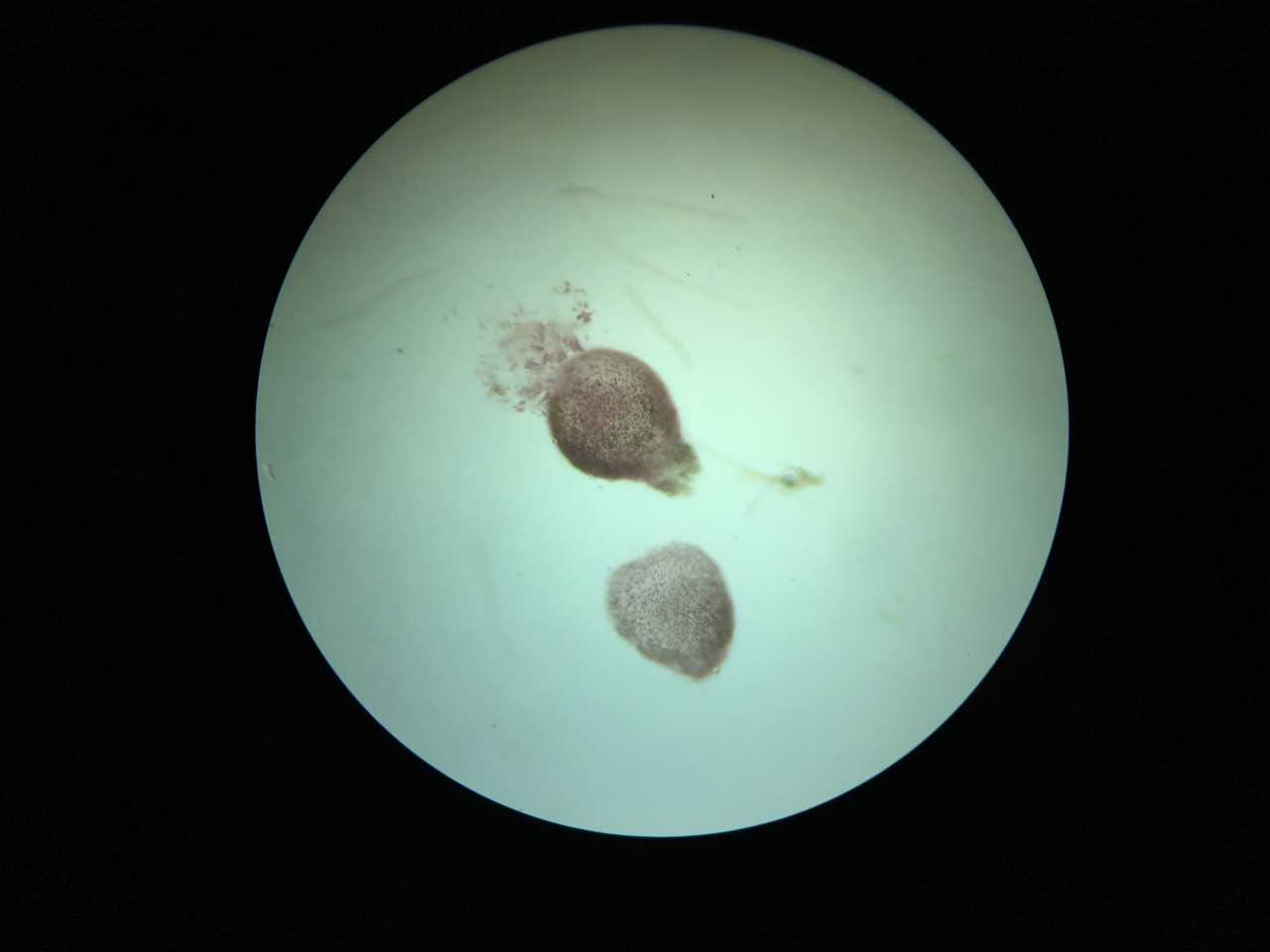
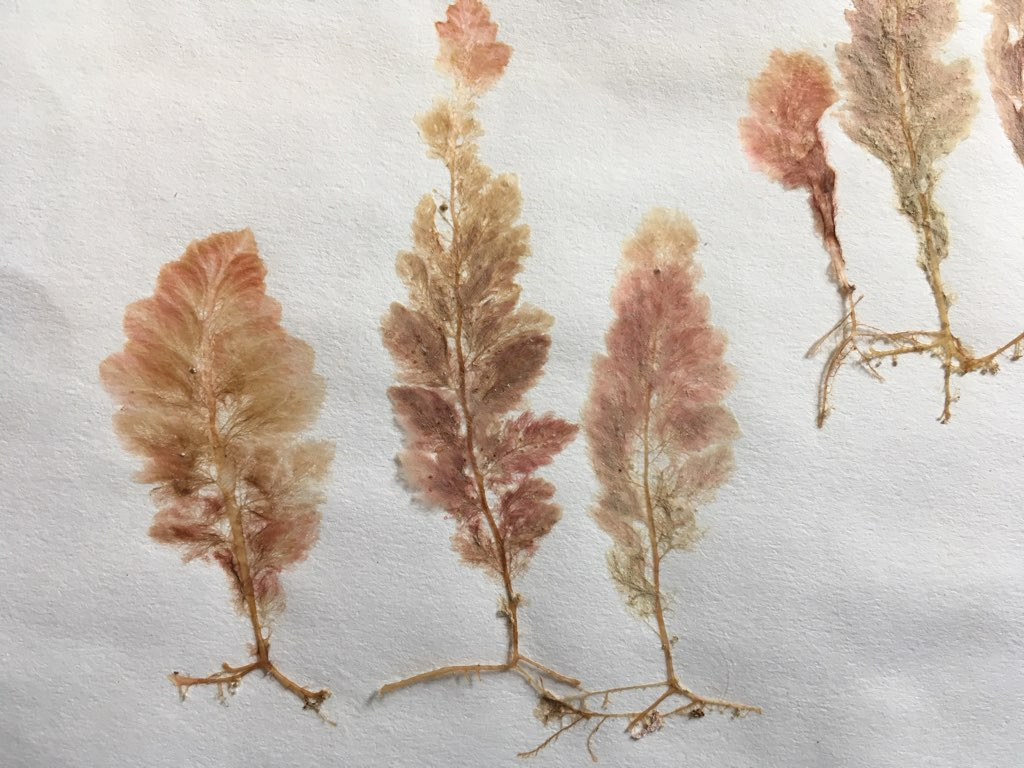
Before the Blue Fields offshore array becomes a reality, a series of land-based trials at our Kona research facility will establish which species may be best to grow, and what they need to thrive. In the coming months we will grow our limu with various mixes of deep seawater and surface seawater, and with different timed pulses of nutrients to determine the needs for scalable production. Our partners at Makai Ocean Engineering, are designing a wave-driven upwelling system to lift DSW nutrients to the offshore array. Once we have selected our target species, the team will finalize designs for a pilot-scale single-point mooring, long-line macroalgae array that harnesses wave, current and wind energy for nutrient delivery and harvesting. We also envisage testing a human-operated prototype algal harvester, with the long-term goal of it being a fully autonomous, reliable, high-yield cutting mechanism (think underwater ROV lawn mower). Through a competitive selection process, Blue Fields may eventually be deployed as a demonstration system offshore in West Hawaiʻi. The resulting biomass will be available for human consumption, as a source for feedstuffs for fish (see our nenue blog) or for cattle, and as material for testing as biofuels.
Seeded lines of Ulva.
We’re only just at the beginning. There’s a lot of work to be done and there is so much that’s still the subject of lively discussion. But that’s what research is about: asking, “What if?”. There is no single answer to all of our environmental challenges. However, seaweed offers a lot of potential to be a key player as we look for ways to feed humanity, mitigate ocean acidification and nutrient ‘dead zones’, and move towards alternative fuel sources.
Learn more about Research at Kampachi Farms.
References:
Bengston, S., Sallstedt, S., Whitehouse, M. (2017) Three-dimensional preservation of cellular and subcellular structures suggests 1.6 billion-year-old crown-group red algae. PLoS Biol., 15(3): e2000735. Available at: http://journals.plos.org/plosbiology/article?id=10.1371/journal.pbio.2000735 [Accessed June 18].
Shannon, E., Abu-Ghannam, N. (2016) Antibacterial derivatives of marine algae: an overview of pharmacological mechanisms and applications. Mar. Drugs., 14(81): doi: 10.3390/md14040081.Available at: https://arrow.dit.ie/cgi/viewcontent.cgi?article=1237&context=schfsehart [Accessed June 18].
Mohamed, S., Hasim, S.N., Rahman, H.A. (2012) Seaweeds: a sustainable functional food for complementary and alternative therapy. Trends Food Sci. Technol. 23(2), pp. 83–96.
The use of algae in fish feeds as alternatives to fishmeal (2013) The fish site [online] Available at: https://thefishsite.com/articles/the-use-of-algae-in-fish-feeds-as-alternatives-to-fishmeal [Accessed June 2018].
Bach, Q., Sillero M. S., Tran, K., Skjermo, J. (2014) Fast hydrothermal liquefaction of a Norwegian macro-alga: screening tests. Algal Res. 6(Part B), pp. 271-276.
How growing sea plants can help slow ocean acidification (2016) Yale Environment 360 [online] Available at: https://e360.yale.edu/features/kelp_seagrass_slow_ocean_acidification_netarts [Accessed June 2018].
Eco-friendly packaging concept made from seaweed wins Lexus Design Award 2016 (2016) De Zeen [online] Available at: https://www.dezeen.com/2016/04/19/eco-friendly-packaging-concept-agar-plasticity-seaweed-wins-lexus-design-award-milan-deisgn-week/ [Accessed June 2018].
Chopin, T., Sawhney, M. (2009) Seaweeds and their mariculture. Encyclopedia of Ocean Sciences (2nd Ed. ), pp. 317-326.
Single point mooring array for macroalgae (2018) ARPA-E Department of Energy [online] Available at: https://arpa-e.energy.gov/?q=slick-sheet-project/single-point-mooring-array-macroalgae [Accessed June 2018].
Huisman, J.M., Abbott, I.A., Smith, C.M. (2007) Hawaiian Reef Plants. University of Hawaiʻi Sea Grant College Program: Honolulu, HI.
Why is There No Commercial Mahi-mahi Aquaculture Yet?
Mahimahi (Coryphaena hippurus), also known as Dorado or Dolphinfish, is a tropical oceanic predator. In the U.S., it is a prized sportfishing species with an annual recreational landing of approximately 5,000 tonnes in recent years; and it is in even higher demand commercially, leading the U.S. to import 25,000 tonnes in 2013 (1). Keep in mind these numbers are for the U.S. alone.
One of the reasons wild stocks have been able to endure this fishing pressure is the remarkable growth and reproductive capabilities of this species. Juveniles have been shown to gain roughly 30 grams a day in laboratory settings, and grow up to 9.5 kg in the first year (2,3). Perhaps more importantly, they reach sexual maturity in just 4 to 5 months in the wild and spawn up to 180 days of the year (4)!
The market, the growth rates, and the success in captive spawning are all there; so why is there no mahimahi aquaculture? The Achilles heel for C. hippurus thus far is their natural aggression: larval rearing can be challenging due to high rates of cannibalism at early life stages, followed by territorial bloodlust as they reach maturity. They start earning the moniker “dolphinfish” at a young age, exhibiting the ability to jump impressively high out of things (tanks) or into things (walls).
At Kampachi Farms we strive to allay this aggression by creating cohorts of single sex mahi. The sex of several other marine fish species can be determined by unique temperature fluctuations near time of spawning, and anecdotal evidence suggests this can be applied to mahi. By defining the ideal water temperature and timing/duration of exposure, we could provide a noninvasive, economical method of producing all-male cohorts. This would be ideal for aquaculture as male mahi aggression is naturally lower in the absence of females, and the overall growth rate of males is higher as they invest less energy in reproduction.
While mahi may be excellent restaurant fare, they are also incredibly useful for ecological research. The same biological features that make this a promising species for commercial production – exceptionally high metabolism, low age at reproduction – make a convenient proxy to illustrate the effects of environmental changes on marine finfish. The University of Miami has used their renowned C. hippurus spawning program in myriad studies since the Deepwater Horizon oil spill to observe the developmental effects this event may have had on pelagic fish species (spoiler: oil is not great for fish). Since mahi progress through their developmental stages so quickly, it is an ideal species in which to study toxicology. For instance, certain levels of embryonic exposure to crude oil may prove nonlethal, but may impact cardiac function and energy demands of the fish later in life (5,6). Similarly, mahi have been used to illustrate the metabolic and behavioral impacts of ocean acidification (7). This knowledge can be applied to past and future scenarios to better understand long term impacts of anthropogenic activity on fish population fitness.
Wild mahi have thus far proven robust to fishing pressure, but the world needs ever more seafood. Optimizing aquaculture of this species can increase availability, alleviate pressure on wild stocks, as well as provide invaluable knowledge for resource management in the face of a changing environment.
More mahi for all!
References:
- NMFS Recreational Fisheries Statistics Queries (2013). National Oceanic and Atmospheric Association. [online] Available at: https://www.st.nmfs.noaa.gov/st1/recreational/queries/ [Accessed 21 Nov. 2017].
- Hagood, R.W., Rothwell, G.N., Swafford, M., Tosaki, M. (1981) Preliminary report on the aquaculture development of the dolphin fish, Coryphaena hippurus (Linnaeus). J. WorldMaricult. Soc., 12(1), pp.135–139.
- Kraul, S. (1989) Review and current status of the aquaculture potential for the mahimahi, Coryphaena hippurus. Advances in Tropical Aquaculture, Workshop at Tahiti, French Polynesia, 20 Feb-4 Mar 1989.
- McBride, R.S., Snodgrass, D.J., Adams, D.H., Rider, S.J. and Colvocoresses, J.A. (2012) An indeterminate model to estimate egg production of the highly iteroparous and fecund fish, dolphinfish (Coryphaena hippurus). Bulletin of Marine Science, 88(2), pp.283-303.
- Esbaugh, A.J., Mager, E.M., Stieglitz, J.D., Hoenig, R., Brown, T.L., French, B.L., Linbo, T.L., Lay, C., Forth, H., Scholz, N.L. and Incardona, J.P. (2016) The effects of weathering and chemical dispersion on Deepwater Horizon crude oil toxicity to mahi-mahi (Coryphaena hippurus) early life stages. Science of the Total Environment, 543, pp.644-651.
- Pasparakis, C., Mager, E.M., Stieglitz, J.D., Benetti, D. and Grosell, M. (2016) Effects of Deepwater Horizon crude oil exposure, temperature and developmental stage on oxygen consumption of embryonic and larval mahi-mahi (Coryphaena hippurus). Aquatic Toxicology, 181, pp.113-123.
- Pimentel, M., Pegado, M., Repolho, T. and Rosa, R. (2014) Impact of ocean acidification in the metabolism and swimming behavior of the dolphinfish (Coryphaena hippurus) early larvae. Marine biology, 161(3), pp.725-729.
Velella Epsilon: Pioneering Offshore Aquaculture in the Gulf of Mexico
As part of a national initiative to increase U.S. aquaculture production in the next four years, Kampachi Farms has been awarded a grant in partnership with Florida Sea Grant to trial a new Velella net pen pilot project in the Gulf of Mexico.
Kampachi Farms has successfully deployed smaller Aquapod™ demonstration fish pens off the coast of Kona, Hawaii. The Velella Beta-test was awarded one of TIME Magazine’s 25 Best Inventions of the Year, and was featured on a National Geographic special hosted by Dr. Robert Ballard. The Velella Beta-test and the Velella Gamma project were both also highly popular with the local Kona fishing community, as the net pen arrays acted as Fish Aggregating Devices (FADs), and proved to be exciting dive sites for snorkel tours.
In 2016, NOAA Fisheries finalized a Rule that would allow commercial aquaculture operations to be permitted in U.S. federal waters in the Gulf. However, no applications have been received for such projects yet, according to Jess Beck-Stimpert, an aquaculture coordinator with NOAA Fisheries.
“This demonstration pen would therefore be the only permitted structure in Gulf waters,” said Beck-Stimpert.
One of the major barriers to commercially expanding open ocean aquaculture in the Gulf of Mexico has been its arduous permitting process.
Neil Anthony Sims, CEO for Kampachi Farms stated, “The primary goal of the demonstration project is to help the local communities in the Gulf of Mexico to understand the ancillary benefits that offshore aquaculture can bring to fisheries and to recreational tourism.”
Kampachi Farms also intends to start discussions with State and Federal agencies and the local community about pioneering an application for a commercial aquaculture permit in the Gulf of Mexico. The Velella Epsilon will use a SUBflex submersible net pen system (made by GiliOcean Technology), on a single-point mooring, which allows the net pens to pivot as the current direction changes. The project will also encourage recreational and charterboat fishermen to use the pen as a FAD, or Fish Aggregating Device. As part of the Sea Grant project, this process, and the community response, will be documented as a reference for future applicants.
Sims explained, “Once the Velella Epsilon has demonstrated the technology and benefits of offshore aquaculture to the local communities, then we will engage them in the discussions about how this industry might move forward. We will also work with the various agencies to identify areas needing further regulation or clarification of agency requirements, or areas where we could eliminate any redundancies. And, we will make our documentation on this process readily available for future aquaculture industry applicants to use as a template.”
For more information on previous Velella Project Trials see our Research Page.
Fertilized Kyphosus Eggs: moving culture of high-value herbivorous reef fish closer to reality
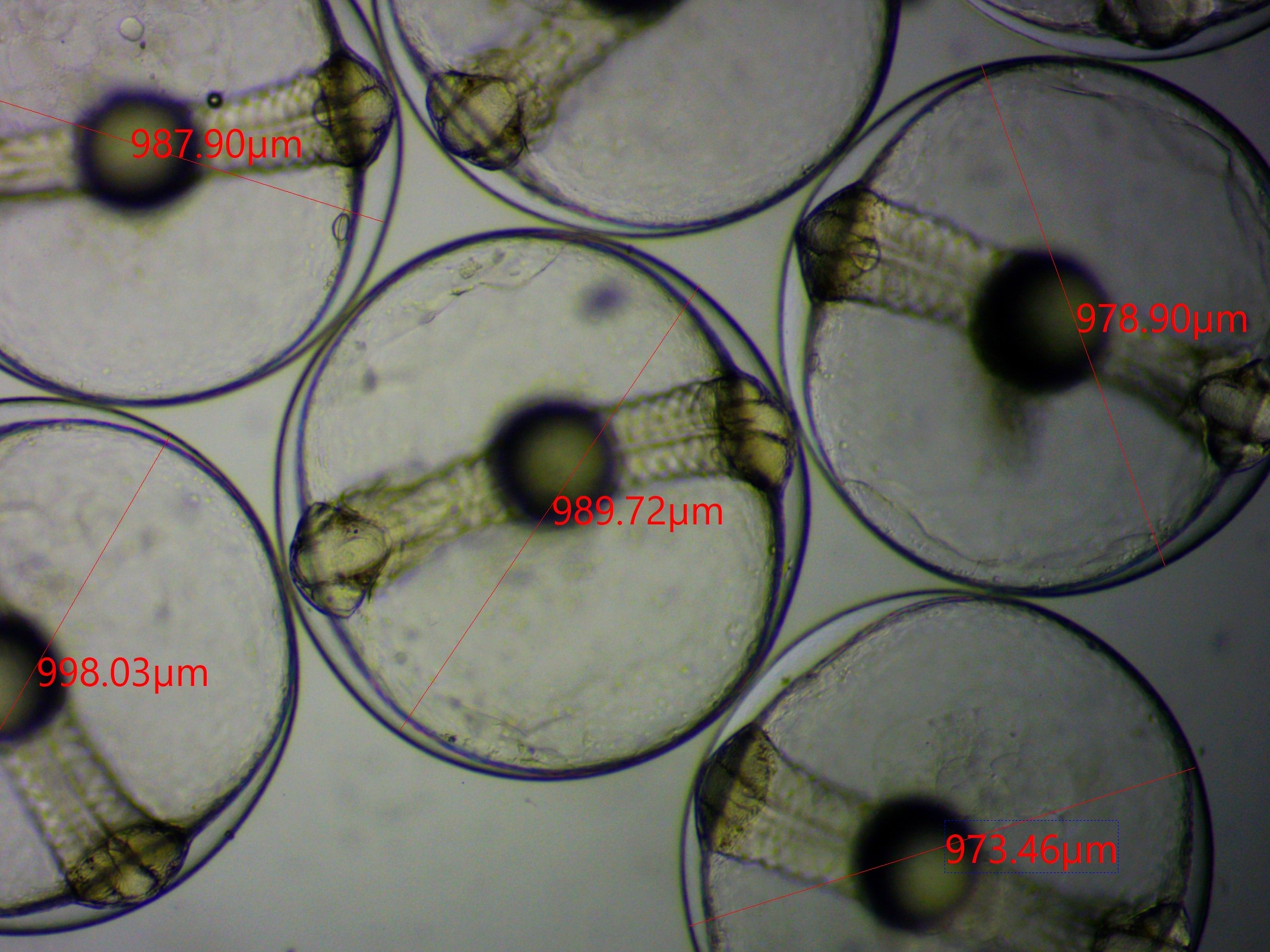

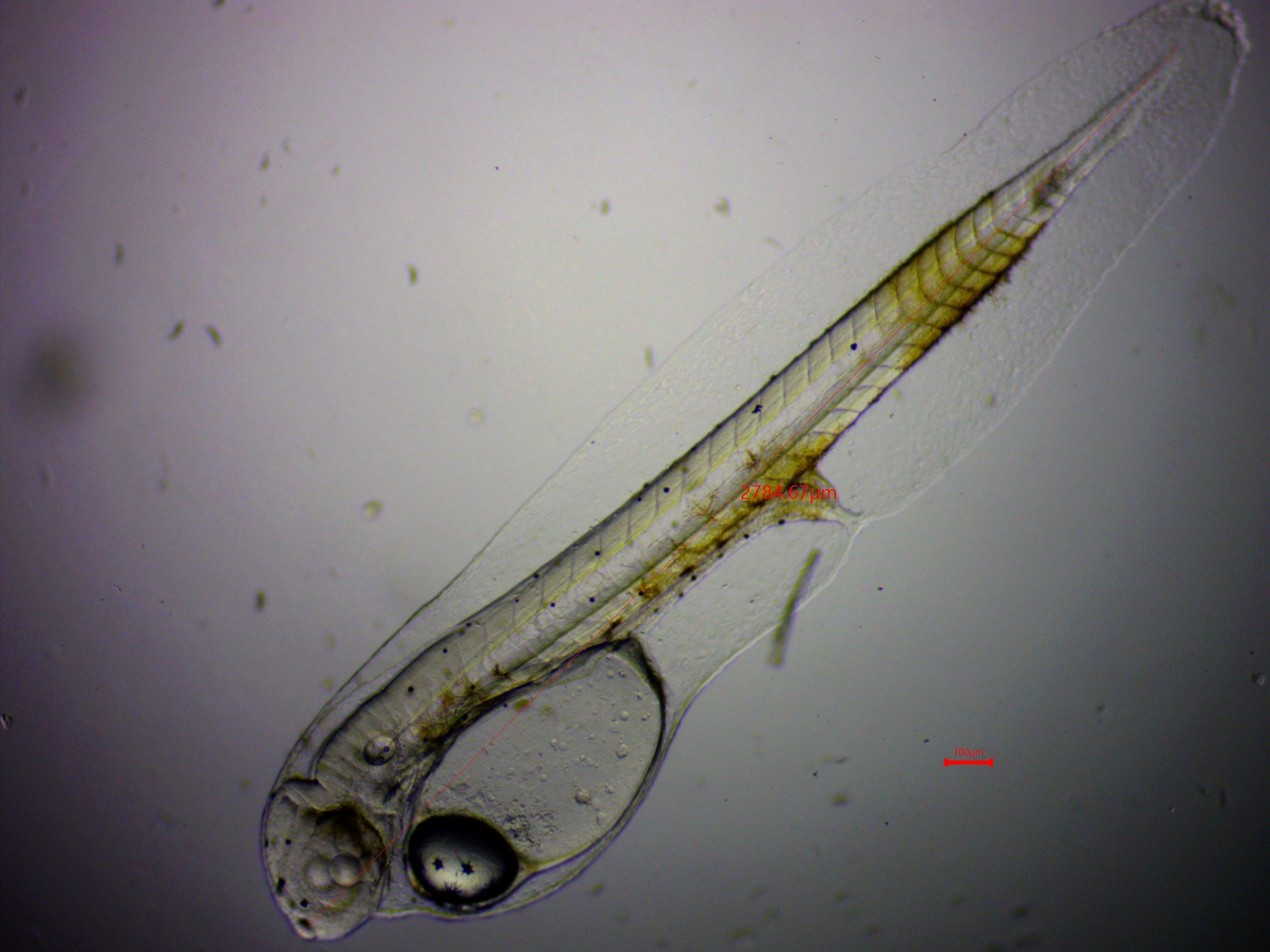
Kampachi Farms’ Research Team recently obtained fertilized eggs from our tank-reared nenue (rudderfish, Kyphosus vaigiensis). To our knowledge, this is the first captive-reared spawn ever obtained of any Kyphosidae family.
Kampachi Farms – along with many others in aquaculture research - have pursued enhanced sustainability by formulating "vegetarian" diets for carnivorous fish, such as our much-loved Cabo Kampachi™. However, few have focused on the potential for growing a high-quality herbivorous marine fish. Herbivorous fish are less widely appreciated, but in Hawaii a local reef herbivore, the nenue (rudderfish; a member of the Kyphosidae family), has always been prized as a food fish. These seaweed-grazers have a fantastically efficient ruminant-like gut, which allows them to digest and utilize macroalgae(seaweed, or ‘limu’, in Hawaiian). Cultured nenue could therefore potentially be grown on a highly sustainable and economical diet including macroalgae, agricultural byproducts and other plant-based materials. Perhaps most importantly, the fish tastes great and is very nutritious.
Learn more about our various research projects.
Expansion of Offshore Aquaculture as a Conservation Goal
It is wonderfully refreshing to see the growing, forthright support for offshore aquaculture from marine conservationists – or at least, from the true thought-leaders among the marine conservation NGO community. We in the industry have clung to our beliefs, borne of experience, that offshore aquaculture – if done right – has immense potential to increase the production of delicious, healthful seafood, with minimal footprint on the seas. And this proposition is now increasingly supported by many of our colleagues who might previously have been more reticent, or might even have opposed our efforts.
Kampachi from the first harvest at Kona Blue Water Farms, 2005
Our earlier pioneering work with Kona Blue Water Farms had shown what was possible. Our submergible net pen array was producing up to 500 tons per year of sashimi-grade kampachi. Extensive monitoring showed no discernible impact on the surrounding water quality, or on wild fish health, or on the spectacularly rich coral-reef that lay a mere half mile inshore from the farm site. It was usually not possible to tell the difference between the water samples that were taken from control sites, up-current of the farm, with those taken from the sample sites down-current of the farm. The coral reef directly inshore is both monitored closely by the Hawaii State biologists (in Aquatic Resources Division), and also scrutinized every day by the dive tour operators – sometimes 10 or 15 boats per night - who bring legions of tourists out to the reef to consort with the manta rays.
As biologists, we understand that all ecosystems have limits to their carrying capacity, and so we have always advocated that significant scale-up of offshore aquaculture should be in deep offshore waters, in areas with brisk currents. But we also felt passionately that the further scale-up offshore had to happen; that it was an ecological imperative as well as an economic opportunity. This understanding was rooted both in our training in fisheries science, and in our recognition of future global food needs. We know that mankind has reached “peak fish” with wild stocks. Global catches are flat, at best. Even if we were to restore all wild fisheries to their optimum levels, this would still only meet about 5% of projected global protein needs (Steve Gaines, of UCSB, pers. comm.). The planet’s growing population, and the increasingly affluent middle class, are all going to demand more animal protein. From whence will it come?
For many years, most of the environmental NGOs in the marine conservation community were staunchly opposed to the idea of growing fish in the ocean. Admittedly, early aquaculture ventures struggled with limited knowledge about fish nutrition and aquatic animal health, net pen engineering and eco-system area management. But over the past three or four decades, there has been a phenomenal improvement in all areas of fish farming in the marine environment – both in the industry’s ability to produce healthy and healthful fish in an efficient manner, with minimal reliance on marine resources such as ‘forage’ fish, and in the overall management of the industry, to limit impacts to marine ecosystems. Yet many eNGOs still clung to the notion that fish farming in the ocean was somehow bad, while the farming of pigs or cows or chickens was a pastoral ideal to be celebrated and encouraged.
Well, thank goodness for science! Or perhaps, more accurately, let’s thank Conservation International and Worldfish Center for their diligent adherence to science. In 2011, these two organizations undertook a joint study – Blue Frontiers – that compared the Life Cycle Assessments of a range of animal protein production systems, and determined that – hands down, far and away – aquaculture was the least impactful of all. By comparison, they concluded, terrestrial livestock production has major impacts on greenhouse gas emissions, freshwater availability, and land use. On a finite planet, we simply cannot feed 9 billion people with hamburgers and pork sausages.
It was a powerful piece of science, and it had an immediate impact on policies. Most of the leading eNGOs disbanded their aquaculture offices (which had been purposed to largely slow down aquaculture’s growth). Most of the science-driven foundations stopped supporting anti-aquaculture advocacy, and began to quietly promote their more preferred forms of aquaculture: Integrated Multi-Trophic Aquaculture, culture of filter-feeding bivalves and freshwater fish, and Recirculating Aquaculture Systems (RAS). There was even an explicit - but only tacit - acceptance of net pen aquaculture, with the participation of a number of eNGOs in drafting of standards for responsible aquaculture.
Aside: We should give full credit where it is due, here … World Wildlife Fund (WWF - the panda-bear people) had for years – even before 2011’s Blue Frontiers - been supporting the Aquaculture Dialogue process, which provided the foundation for the most rigorous of aquaculture standards - those of the Aquaculture Stewardship Council.
However, there was very little outspoken support for helping aquaculture to grow, or for dispelling the negative stereotypes that were firmly established in consumers’ minds from the years of besmirching farmed fish. When we asked the CEO of one leading marine conservation organization if – in light of the Blue Frontiers study – he would publicly endorse responsible net pen culture, he very politely but very firmly demurred.
So yet again, let’s thank Conservation International (CI) for having the good grace, common sense and integrity to once more lead by example. Recently, in “Human Nature” the Conservation International Blog, Leah Duran outlined the “5 Myths about Farmed Seafood." And (bless them!), the dispelling of Myth No. 5 (“Farmed seafood is only grown on land and close to shore”) constituted the most forthright endorsement of the expansion of offshore aquaculture that we have yet seen from the NGO quarter. It was far more than we could have ever dared hope for! Some of it, we could not have said better ourselves: “Deeper waters and faster currents lessen pollution and disease, increase production, and reduce pressures on terrestrial and coastal habitats.” Amen!
The article extensively quoted Ben Halpern (“lead scientist for the Ocean Health Index, a tool developed by CI that tracks ocean health”). Halpern embraced “the ‘vast, untapped potential’ of deep-water aquaculture to meet global seafood needs — sustainably”. Thank you, CI … thank you!
The CI Blog also referenced a recent study, led by researchers from UC Santa Barbara, but which included scientists from the Nature Conservancy, UCLA and the National Oceanic and Atmospheric Administration. Their research, published in the peer-reviewed journal Nature Ecology and Evolution, shows the tremendous potential for scale-up of marine aquaculture. According to the study, use of the available ocean space for marine aquaculture – excluding those areas with other conflicting ocean uses or conservation concerns, and extending out to a depth of only 200 m - could produce more than 100 times the current level of consumption of seafood globally.
Further underscoring the point: the equivalent of the current harvest of all of the world’s wild-caught fisheries could be farmed in an area less than 0.015 percent of the total ocean surface; i.e. an area about the size of Lake Michigan. The challenge, the study concluded, is not ocean space, it is primarily one of policy; willpower, if you will. All that is needed is “good governance, sustainable investment and rock-solid science.”
And these essentials, we would assert, can all flow from active involvement of the conservation community, working with us to expand this industry, and ensuring that we expand in an environmentally and socially responsible manner. Now, even Seafood Watch is tweeting out, loud and proud, for aquaculture: “… farmed seafood is … the solution for our growing global demand for seafood.”
We do love to see these endorsements! But … consider, please: the conservation community is quite justly incensed with the climate-change deniers, for their unwillingness to accept the overwhelming evidence and the preponderance of opinion among scientists. So, we also quietly wonder – what will it take for the rest of the environmental community and academia to accept the science showing the need for growth in offshore aquaculture? And what will it take for them to voice this support publicly? We all need to work together to reverse consumers’ misperceptions about aquaculture, and to encourage consumers to eat more farmed seafood. The planet’s health – and consumers’ health – depend on it.
Aloha, all. And Onwards!
